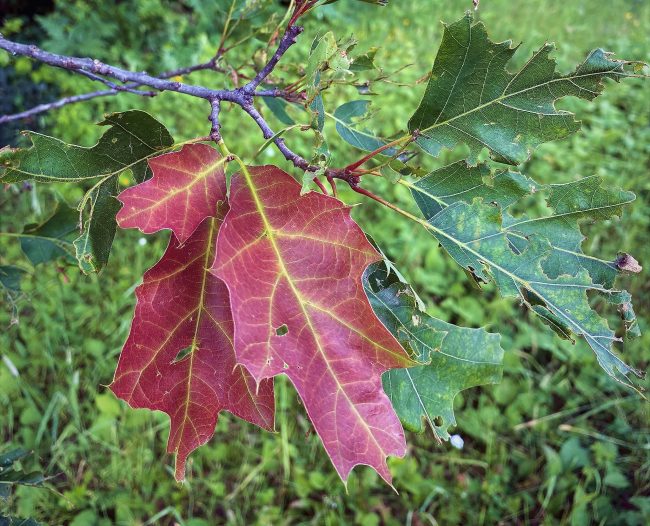
From the Wisconsin Department of Natural Resources Facebook Page:
In Wisconsin, the leaves of our majestic, towering red oak trees generally are not red, but nature has created an exception to that rule.
In some areas (particularly the North) this summer, red oaks that have been defoliated by hungry caterpillars are regenerating leaves with a prominent red color.
While some may assume the red leaves are meant as a warning flag indicating diseases such as oak wilt or other stressors, they’re actually a normal response to defoliation and usually not a major cause for concern.
The freshly grown leaves are red due to high concentrations of a group of pigments called anthocyanins. These pigments provide several benefits to developing leaves. First, they act as sunscreen, helping the new leaves handle heavy exposure to summer’s direct sunlight.
Their red colors can also provide camouflage, preventing repeat visits from insects. To many insects, the red leaves appear black and do not trigger a feeding response. Even if the insects try to feed on them, the anthocyanins make the young leaves less palatable.
So, if you see a tree with patches of red leaves this summer, don’t worry; instead, marvel at nature’s capacity to solve problems.
Find this article interesting? Learn this and more on the DNR’s facebook page at: https://www.facebook.com/WIDNR




